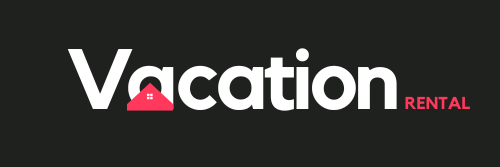Recent changes to Airbnb’s host fee structure have left many property owners grappling with adjustments in their pricing strategies. The shift towards a host-only fee of 15.5% marks a significant moment in the landscape of short-term rentals, affecting both earnings and pricing tactics for hosts. Understanding the nuances of this change is crucial for maximizing revenue and maintaining competitiveness in an increasingly crowded marketplace.
Overview of Airbnb’s Fee Structure Changes
In 2025, Airbnb transitioned away from its traditional split-fee model to a new host-only fee system, which significantly alters how hosts calculate their pricing. The former model required that hosts pay a fee of approximately 3%, while guests absorbed a service fee ranging from 14% to 16%. This model often confused both hosts and guests, leading to a lack of transparency regarding total costs and ultimately impacting booking decisions.

The New Host-Only Fee Model
The new host-only fee structure directly deducts 15.5% from the host’s earnings. This alteration means that the total pricing visible to guests no longer includes a separate line item for service fees. Instead, the guest sees an all-inclusive price, which helps to streamline the booking process. This transition occurred in phases:
- August 25, 2025: New property management system (PMS)-connected hosts began utilizing the host-only fee.
- October 27, 2025: Most PMS-connected hosts transitioned to the new fee structure globally.
- December 1, 2025: The remaining non-PMS hosts aligned with the 15.5% fee.
This new model reflects broader trends in the vacation rental market, where guests increasingly prefer transparent pricing without hidden fees. Although it provides clarity, the shift necessitates adjustments in how hosts price their properties.
Calculating Your Pricing Under the New Fee Structure
Understanding the calculation behind the new fee structure is critical for maintaining profitability. The general rule of thumb states that if a host desires to net a certain amount after Airbnb’s fee deduction, they must adjust their gross price accordingly. This situation has led to confusion around the difference between the fee and necessary markup added.
Understanding Markup and Fee Confusion
To preserve net earnings, property managers need to comprehend the distinction between the Airbnb host fee and the markup required in a PMS. Simply put, while Airbnb takes a 15.5% cut, the markup applied should be approximately 18.34% to keep payouts consistent. The math can be illustrated as follows:
| Desired Payout | Gross Airbnb Price | Airbnb Deduction |
|---|---|---|
| $100 | $118.34 | $18.34 |
The formula shows that, if a host aims to receive $100, they actually need to set their price at $118.34 before Airbnb deducts its fee. Mistakes in understanding this calculation can lead to unintended decreases in net profit, a risk that property owners can’t afford to take.
Adjusting Additional Fees for Comprehensive Pricing
In addition to nightly rates, hosts must also consider their cleaning fees and any additional charges that may apply to bookings. Under the new structure, Airbnb’s 15.5% fee applies not only to the nightly rate but also to cleaning fees and extra guest charges. Therefore, hosts should adjust these fees in line with the same markup applied to nightly rates.
Example of Adjusting Cleaning Fees
A simple calculation illustrates the need for adjusting these fees to ensure that net earnings remain stable:
- Old Cleaning Fee: $100
- New Cleaning Fee Calculation: $100 x 1.1834 = $118.34
After applying the 15.5% fee, the host nets $100 from the adjusted cleaning fee. Keeping the associated fees correctly priced will help ensure that overall profitability remains steady despite alterations in fee structure.
Addressing Common Misunderstandings About Fees
Within the property management community, confusion around Airbnb’s new fee structure and necessary markups remains prevalent. Some hosts mistakenly equate the host-only fee with the required markup to maintain earnings, leading to potential revenue loss. Clarifying these concepts is essential for informed pricing strategies.
Key Distinctions to Note
It’s crucial to understand and communicate the following points:
- Fee: The amount that Airbnb retains from the gross booking price.
- Markup: The percentage added by hosts to ensure their target payout is met after the fee is deducted.
For instance, if a host is managing a property on Airbnb and has adjusted their fee to 15.5%, it does not inherently mean they should also set their PMS markup at 15.5%. Instead, maintaining an approximately 18.34% markup preserves the intended earnings. Such misunderstandings can significantly impact the financial viability of an Airbnb listing.
Strategic Adjustments in Response to Fee Changes
As the vacation rental sector continues to evolve, property managers are presented with both challenges and opportunities due to these fee changes. Understanding the broader context surrounding Airbnb’s fee model empowers hosts to optimize their approach in a competitive landscape that includes platforms like Vrbo, Booking.com, and others.
Navigating Competition with Other Platforms
Hosts may consider how Airbnb’s adjustments position them relative to other online travel agencies (OTAs). For example, Vrbo typically offers lower host fees around 8%, but it imposes guest-facing fees of 6% to 15%, potentially affecting booking conversions. Meanwhile, Booking.com generally operates close to a 15% commission base, with additional payment processing fees.
Hosts should weigh the following factors when determining their listing strategy:
- Understand the relative costs on each platform.
- Evaluate guest preferences for transparent pricing vs. fee structures.
- Consider the potential for stronger demand on platforms with a straightforward pricing model, such as Airbnb post-adjustment.
Furthermore, exploring direct booking options becomes more appealing, with processing costs remaining low at approximately 2–3%. This represents a profitable alternative to relying solely on OTA bookings, where margin compression due to fees can occur.
